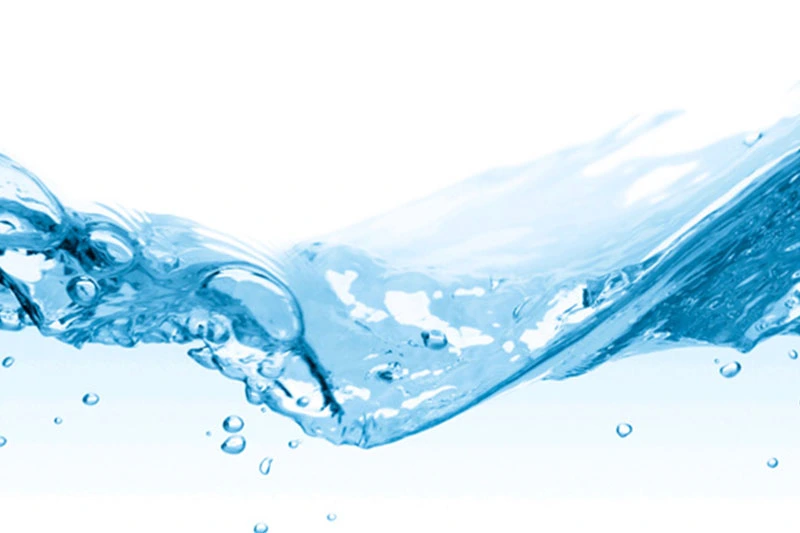
Fluid & Particles Mechanics (Mekanika Fluida & Partikel)
Topik ini membahas tentang sifat fluida dan partikel yang berhubungan dengan teknik kimia. Materi mencakup sifat-sifat fluida, fluida kompresibel dan fluida inkompresibel, peralatan aliran (pompa, blower, kompresor), lapisan batas, fluidized dan fixed bed, dan gerak partikel.
References:
- McCabe, W. L., Harriott, P., & Smith, J. C. (2004). Unit Operations of Chemical Engineering (7th ed.). McGraw-Hill.
- Munson. B. R., Young, D. F., Okisshi, T. H., & Huebsch, W. W. (2009). Fundamental of Fluid Mechanics (6th ed.). John Wiley & Sons, Inc.
- Nevers, N. d. (1991). Fluid Mechanics for Chemical Engineers (2nd ed.). McGraw-Hill, Inc.
- Richardson, J. F., Harker, J. H., & Backhurst, J. R. (2002). Coulson and Richardson's Chemical Engineering: Particle Technology and Separation Process (5th ed., Vol. 2). Butterworth-Heinemann.
- White, F. M. (2011). Fluid Mechanics (7th. ed). McGraw-Hill.
- Bird, R. B., Stewart, W. E., Lightfoot, E. N., & Klingenberg, D. J. (2014). Introductory Transport Phenomena. John Wiley & Sons, Inc.
- Geankoplis, C. J. (1993). Transport Processes and Unit Operations (3rd ed.). Prentice-Hall International, Inc.
- Wilkes, J. O. (2018). Fluid Mechanics for Chemical Engineers with Microfluids, CFD, and COMSOL Multiphysics 5 (3rd ed.). Prentice Hall.
Course Fee
Reviews
Schedule
Appointment with tutor(s)
Registration
Properties of Fluid
As an introduction to fluid mechanics, studying properties of fluids is very critical. This session includes materials in fluid about:
- Density, Specific Weight, Specific Gravity, and Specific Volume
- Viscosity, Kinematic Viscosity, Vapor Pressure, and Surface Tension
- Compressibility of Fluids
Basic Equation of Fluid Flow
The materials discussed in this session covers fundamentals pricniples and equations in fluid flow, including:
- Mass Balances in a Flowing Fluid
- Equation of Motion - Differential Momentum Balances
- Macroscopic Momentum Balances
- Mechanical Energy Balances
- Bernoulli's Equation and Its Application
Fluid Statics
This session covers materials in static fluid and principles about static fluid, which includes:
- Basic Equation of Fluid Statics
- Pressure Variation in a Static Fluid for Incompressible and Compressible Fluid (Hydrostatic Force)
- Measurement of Pressure
- Manometry
- Hydrostatic Force on a Plane Surface
- Buoyancy Force (Archimedes' Principle)
Flow of Incompressible Fluid in Pipes
Incompressible fluid is a fluid that very familiar with our daily life, for example is water. The materials discussed includes:
- Macroscopic Mechanical Energy Balance
- Friction Loss in the Straight Pipes
- Friction Factor Equations and Moody Chart
- Flow in Non-Circular Pipes
- Friction Loss from Sudden Contraction, Sudden Expansion, Fittings, and Valves
- Application of Fluid Flow in Single Pipes and Multiple Pipe Systems
- Pipe Flowrate Measurement (Nozzle Meter, Orifice Meter, and Venturimeter)
Pumps
Pump is an equipment that makes incompressible fluid flows. This session discuss materials:
- Pump Performance Characteristics (Head, Power, Efficiency, Brake Horsepower)
- Pump Performance Curves
- Cavitation and Net Positive Suction Head (NPSH)
- Positive Displacement Pumps & Centrifugal Pumps
- Pump Selection
- Pump Scaling Law
- Fans
Flow of Compressible Fluid
Compressible fluid is a fluid that usually comes in for of gas or vapour. This session discuss:
- Energy Balances
- Mechanical Energy Balances
- Velocity of Sound
- Process of Compressible Flow
- Isentropic Flow Through Nozzles
- Friction in Compressible Flow (Adiabatic and Isothermal)
Blowers and Compressors
Blowers and compressors are the equipments to transport compressible fluids. This sessions includes materials in:
- Types of Blowers and Compressors
- Adiabatic Compression
- Isothermal Compression
- Polytropic Compression
- Compressor Efficiency and Power
- Compressor Selection
- Surge and Choke in Compressor
- Compression Ratio and Stages Required
Agitation and Mixing of Liquids
This session discus how fluid are mixed in a vessel or container, including:
- Agitated Vessels
- Classes of Impeller
- Flow Pattern in an Agitated Vessel
- Power Consumption
Rheological Properties of Fluids
One of the most important analysis in fluid mechanics are rheological analysis. This session discuss:
- Newtonian and non-newtonian Fluids
- Rheological Characteristics of Fluids
- Reynolds Number and Friction Factor for Non-Newtonian Fluids
Boundary Layer
This session is introduction to boundary layer. The materials in this session includes:
- Viscous Core and Inviscid Core
- Boundary Layer at Laminar and Turbulent Flow
- Reynolds Number for Flow Along a Flat Plate and Boundary Layer Thickness Calculation
- von Karman's Analysis on a Flat Plate (Drag Force, Momentum Thickness, Momentum Integral, Boundary Layer Thickness)
- Displacement Thickness
Motion of Particles in a Fluid
Motion of particle in fluid can effect the properties of flowing fluid. This session will discuss:
- Pressure and Velocity Distribution on a Spherical Surface
- Drag Force and Drag Coefficient Based on Flow Regime
- Force Balances at Terminal Velocity
- Terminal Velocity Based on Flow Regime
- Particle Separation using a Centrifuge
Fixed Beds and Fluidized Beds
Beds are commonly found in process industries, and more commonly used for catalysts. This session discuss:
- Random & Structured Packing
- Darcy's Law of Permeability
- Pressure Gradient for Fixed Beds
- Pressure Gradient for Fluidized Beds
- Minimum Fluidization
- Particulate Fluidization (Liquid-Solid System)



